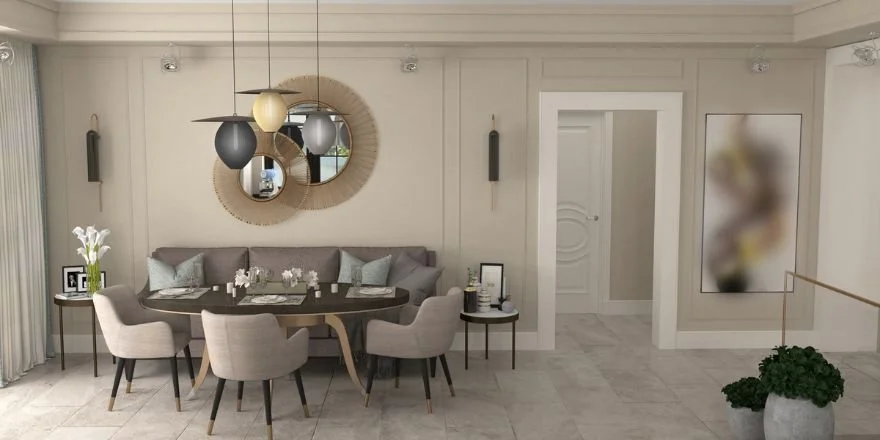Tailored Luxury: Hospitality Design Strategies for the U.S. Premium Market
Creating a hospitality experience that resonates with the most discerning travelers in the U.S. requires more than just beautiful aesthetics. It demands a strategic approach that blends exclusivity, flexibility, and sustainability. In this post, I explore essential design strategies tailored to the high expectations of the luxury hospitality segment, from exclusive zoning to wellness-certified environments.
Spatial Zoning: The Foundation of a Premium Guest Experience
Effective spatial zoning is the cornerstone of any luxury hospitality design. Today’s premium guests expect seamless transitions between spaces, whether they’re moving from an exclusive lounge to a private spa suite or heading to an intimate dining enclave.
Key considerations include:
Private Lounges for VIP check-ins and relaxation.
Spa Suites that offer in-room wellness experiences.
Exclusive Dining Areas with curated menus and personalized service.
Creating defined zones elevates the sense of privacy and exclusivity, which are non-negotiable in the premium market.
Designing for Flexibility: Adapting to Luxury Traveler Profiles
Modern luxury travelers are diverse—from business executives to wellness seekers. Designing flexible spaces that can adapt to various needs is essential.
Business travelers value high-functioning meeting lounges with tech integration.
Leisure travelers seek comfortable, immersive environments.
Wellness-focused guests prioritize tranquil zones with access to spa and fitness amenities.
Multi-functional spaces that can transform from a conference room by day to a cocktail lounge by night offer a dynamic return on investment (ROI) by increasing occupancy and satisfaction rates.
LEED and WELL Certifications: More Than Green Badges
For premium clientele, sustainability isn’t a trend—it’s an expectation. Integrating LEED (Leadership in Energy and Environmental Design) and WELL Building Standard certifications not only enhances a property’s eco-profile but also communicates a commitment to wellness and environmental responsibility.
Design strategies include:
Efficient energy and water systems.
Use of non-toxic, biophilic materials.
Enhanced air quality and natural light optimization.
These certifications boost a hotel's marketability and align with the values of a growing segment of eco-conscious travelers.
Data-Driven Design: Real Estate and Travel Industry Insights
In the premium sector, design decisions must be informed by ROI-focused data from both the real estate and travel industries. For instance, luxury hotels with tailored wellness zones report higher guest retention rates and longer average stays.
According to recent studies:
Properties with personalized guest experiences see a 30% increase in repeat bookings.
Premium amenities directly correlate with higher per-night rates.
Understanding market trends ensures that design investments translate into financial performance.
Technology Integration Without Compromising Elegance
Luxury doesn’t mean over-the-top; it means intelligent. Integrating technology in a subtle and elegant manner enhances guest comfort without disrupting the aesthetic.
Smart room controls for lighting, temperature, and entertainment.
Automated check-in/check-out processes for convenience.
Touchless features for health and safety.
Balancing high-tech features with high-touch service is the new benchmark in luxury hospitality.
Signature Style: Crafting a Unique Brand Identity
While it’s important to keep up with trends, premium hospitality design must reflect a brand’s unique story.
Use of bespoke furnishings and custom art.
Local cultural influences to ground the experience.
Signature scenting and sound design for sensory branding.
Guests should be able to walk into your space and immediately understand your brand without needing to read a brochure.
Challenges in Premium Hospitality Design
Luxury projects come with their own set of challenges:
High client expectations demand innovation and perfection.
Architectural limitations in heritage buildings or urban spaces.
Balancing ROI with quality, especially in sourcing premium materials.
Overcoming these hurdles requires collaboration between designers, hoteliers, and developers to ensure both aesthetic excellence and operational efficiency.
Creating Lasting Impressions Through Tailored Design
In the premium U.S. hospitality market, design is more than visual appeal—it’s a strategic tool to create lasting guest impressions and drive business growth. Whether it’s through spatial zoning, personalized wellness spaces, or LEED-certified features, the ultimate goal is to exceed expectations in every detail.
If you're planning a high-end hospitality project and want to elevate your design strategy, let's connect. Our tailored approach ensures every element reflects the luxury your guests deserve.
Related Post
Brentwood Balance: Luxury Interior Design for Functionality & Elegance
Cliffside Sophistication: Luxury & Eco-Friendly Interior Design in Sea Cliff


